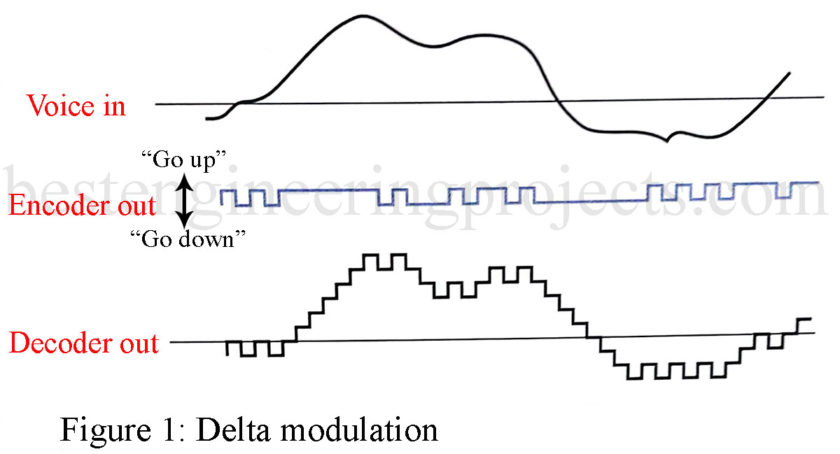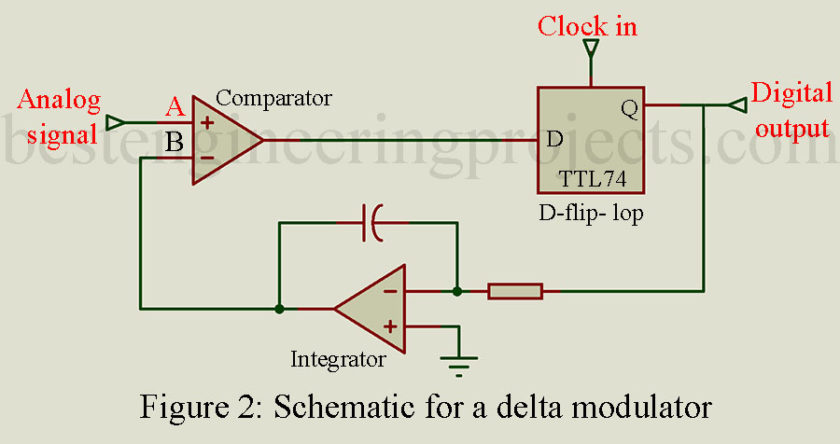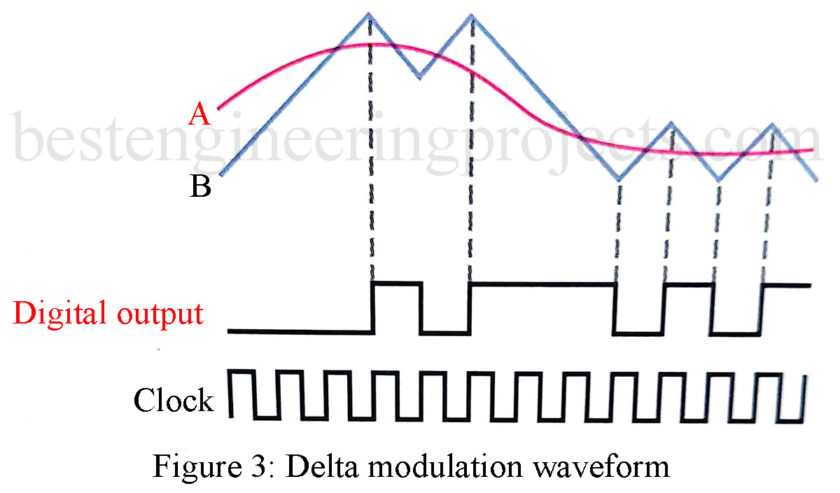Delta modulation (DM), sometimes called slope modulation, is another truly digital system (as is PCM). It transmits information to only indicate whether the analog signal it encodes is to “go up” or “go down.” This process is shown in Figure 1. Note that the encoder outputs are highs or lows that “instruct” whether to go up or go down, respectively.
The relative simplicity of this system is readily apparent as compared to PCM. Delta modulation takes advantage of the fact that voice signals do not change abruptly and there is generally only a small change in level from one sample to the next. On the other hand, PCM is able to respond to very abrupt level changes between samples, such as analog signals that have been time-domain multiplexed before encoding.
A schematic for a delta modulator is shown in Figure 2. A demodulator would consist of an integrator (just like the one in Figure 2) followed by a sharp-cutoff low-pass filter. The integrator output would look like waveform B in Figure 3. The filter smooths it out to provide the final analog signal.
The major advantage of delta modulation is simplicity. The delta modulator is called a tracking ADC because it follows the contours of the input and provides an output that shows input changes rather than exact values. It does not require the synchronization of PCM systems and inherently provides a serial stream of bits so there is no need for a parallel-to-serial converter.
A difficulty faced by these systems is slope overload. When the analog signal has a high rate of change, the delta modulator can “fall behind” and distorted output results. An increased sample rate could be used, but this necessitates a higher bandwidth transmission of the signal. In systems where this is a problem, a technique called continuously variable slope delta (CVSD) modulation is used. A typical CVSD scheme is to increase the step size whenever there is a longer run than three successive 1’s or 0’s. When the modulator catches up (as indicated by a change from 1 to 0 or 0 to 1), the step size returns to normal.
CVSD systems are typically implemented using a single LSI chip for both the transmitter and receiver sections. Similarly, the algorithm used for transmitting is used to reverse the process for the reception. The net overall effect of CVSD can be compared to companding, except that CVSD depends on past values and adapts while companding is a fixed algorithm.
PCM/ Delta Modulation Comparison
The choice between PCM and delta modulation (with or without CVSD) involves technical trade-offs, as you might expect. The inherent simplicity of delta modulation comes with the price of increased bandwidth (bit rate), as compared to PCM by a factor of 2 or 3. In applications where increased bandwidth is not a problem, delta modulation would typically be used. Additionally, delta modulation (with or without CVSD) exhibits less serious degradation in the presence of digital noise interference than with PCM. In PCM, a noise-induced error in one of the more significant bits in a digital word can give the listener a painful audio burst. In CVSD, an error in any bit produces only a minor transient noise. It has been demonstrated that CVSD transmissions are quite intelligible even with 10% random bit errors introduced.


